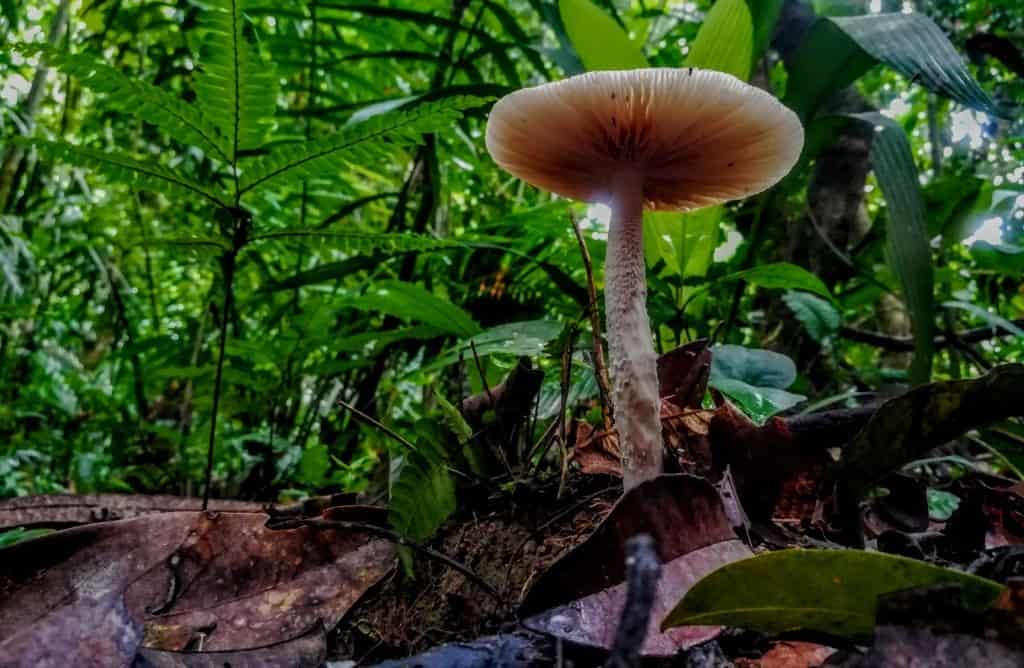Just a teaspoon of Amazonian soil contains as many as 1,800 microscopic life forms, of which up to 400 were classified as fungi, a new study found. Researchers described the fungal diversity as the “dark matter” of life on Earth, calling for further protection of the Amazon to study it.

Fungi are a key component of tropical biodiversity. However, due to their inconspicuous and largely subterranean nature, they are usually neglected in biodiversity inventories. Most of the estimated 3.8 million fungi in the world haven’t been formally classified yet.
If there’s a place where fungi are abundant in the soil, that’s the Brazilian Amazon rainforest. And in order to help protect the area, currently challenged by extractive activities such as deforestation and mining, it’s essential to understand the ecological role of fungi, researchers have argued.
“Take a teaspoon of soil and you will find hundreds or thousands of species. Fungi are the next frontier of biodiversity science,” Alexandre Antonelli, director of science at the Royal Botanic Gardens, Kew and co-author of the study, told the BBC.
Antonelli and his team characterized fungal communities across Amazonia using environmental samples of soil and litter. They sampled four representative localities across the Brazilian Amazonia: Benjamin Constant, to the south of the Amazon river, Jaú, located to the west, Caxiuanã, located to the south, and Cuieras, located to the east.
The researchers sampled all depths of the litter layer above the mineral soil (all organic matter, including leaves, roots, and animal debris) and the top 5 cm of the mineral soil in a total of 39 circular plots. They also chose 20 random trees inside each plot and collected litter and soil on both sides of each tree. Then they pooled the samples by substrate to produce one litter sample and one soil sample per plot.
Genetic analysis of the samples showed hundreds of different fungi, including lichen, fungi living on the roots of plants, and fungal pathogens, most of which are unknown or extremely rare. Most species have yet to be named and investigated. Areas of naturally open grasslands, known as campinas, were found to be the richest habitat for fungi overall.
“We were surprised to find that campinas were, on average, the richest habitat for fungi. This stands in contrast to patterns observed for animals and plants. One explanation for the campinas being the richest environment may be the need for plants to associate with micro‐organisms that fix nutrients in the poor soil habitats,” the researchers wrote.
Fungi are highly important for recycling nutrients, regulating carbon dioxide levels, and as a source of food and medicines. Yet, some species can also affect trees, crops and other plants across the world, wiping out animals such as amphibians. Fungi in soil from tropical countries are particularly poorly understood.
The findings highlight the need to improve our understanding of the patterns and drivers of fungal diversity and community composition, the researchers argued. This is one of the most diverse eukaryotic kingdoms, whose members play key roles in nutrient cycling and biotic interactions in terrestrial ecosystems, they added.
“Deforestation of Amazonia is increasing rapidly and to protect this vast biome it is fundamental to understand the processes underpinning ecosystem stability. For this, we have to identify and understand the distribution and diversity of organisms essential for ecosystem functionality, including fungi,” the team concluded.
The study was published in the journal Ecology & Evolution.









